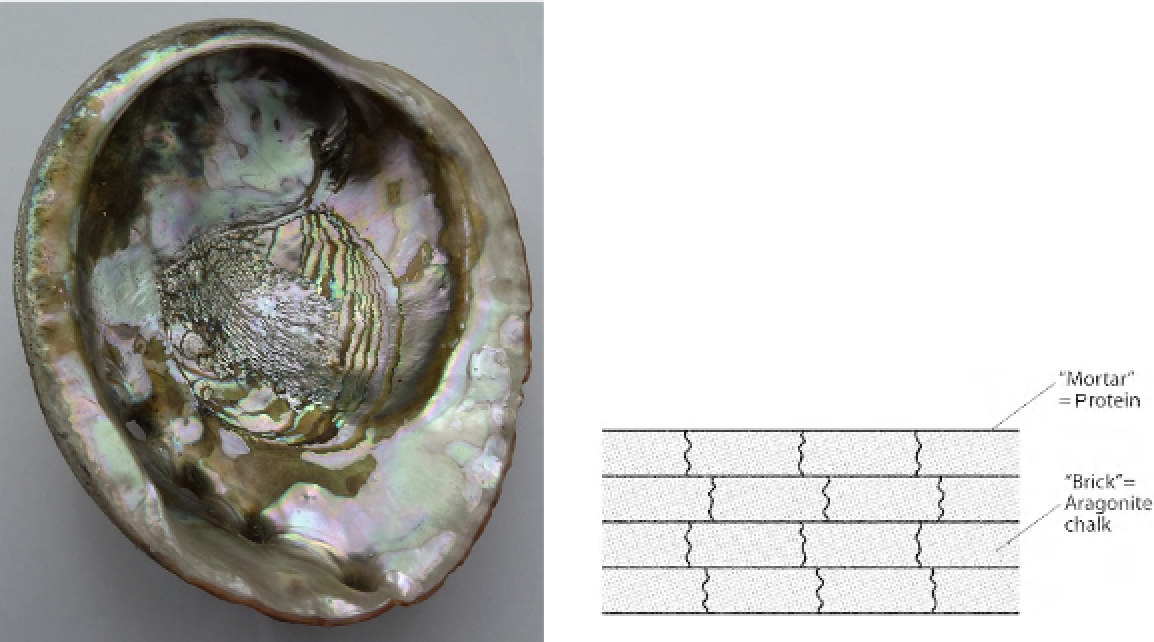Biomedical Engineering Reference
In-Depth Information
Tero and colleagues developed a mathemati-
cal model that uses the same principles
[49, 51]
,
i.e., increases or decreases in the capacity of a
connection between two nodes depend on the
flux. When used to generate a network for the
Tokyo station layout, the model performed
slightly better than both the actual Tokyo rail-
way network and the slime mold networks. The
decentralized planning model can be used for
many types of infrastructure networks, ranging
from railway systems to power grids, financial
systems, information networks, and supply
networks.
layer by layer. Two different types of layers
alternate in nacre. The relatively thick layers
(
∼
500 nm) of aragonite crystals (calcium carbon-
ate) are separated by thinner layers (
∼
30 nm) of
highly cross-linked protein
[53]
. The aragonite
layers are furthermore split into small units and
separated vertically by protein walls.
Nacre has remarkable mechanical properties.
It is extremely tough, considering that the
majority of the material content is chalk, which
is very brittle. Nacre is 95% aragonite by vol-
ume, which essentially is chalk, but the tough-
ness is 1,000 times greater than that of monolithic
calcium carbonate
[54-56]
. Toughness can be
measured as the specific work of fracture (
R
/
ρ
),
which for aragonite is 0.0002 kJ m
−
2
and for
nacre is 0.4 kJ m
−
2
[55]
.
The explanation of this behavior is found in
the layered composite structure, also referred to
as
brick and mortar
, shown in
Figure 13.18
. See
also Chapter 3 on biomimetic hard materials. A
popular explanation of the phenomenon is the
prevention of crack propagation. The cracks are
stopped when they meet the more ductile pro-
teinaceous layers. A more detailed explanation
can be gleaned by looking at the energy conver-
sions, which also reveal that self-healing mecha-
nisms are involved
[54]
. When a predator such
as a crab attacks a mollusc, it is vital that the
mollusc shell can absorb the energy from the
repeated bite of the crab claw. This is done
through the formation of many small cracks in
13.
9 MULTILAYER FORMATI
ON
Many molluscs (Mollusca) produce hard shells
to cover themselves. The beautiful nacre (see
Figure 13.17
) on the inside of the bivalve shell is
a composite layered structure that is produced
FIGURE 13.18
The layered “brick-and-mortar” structure
in the mussel shell with very thin layers of protein between
aragonite sections.
FIGURE 13.17
Nacre (“mother-of-pearl”) on the inside
of an abalone shell (
genus
Haliotis
).


